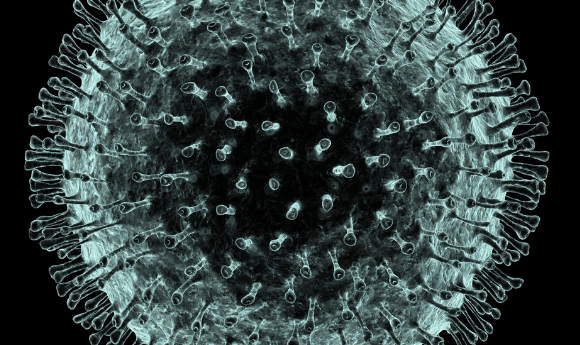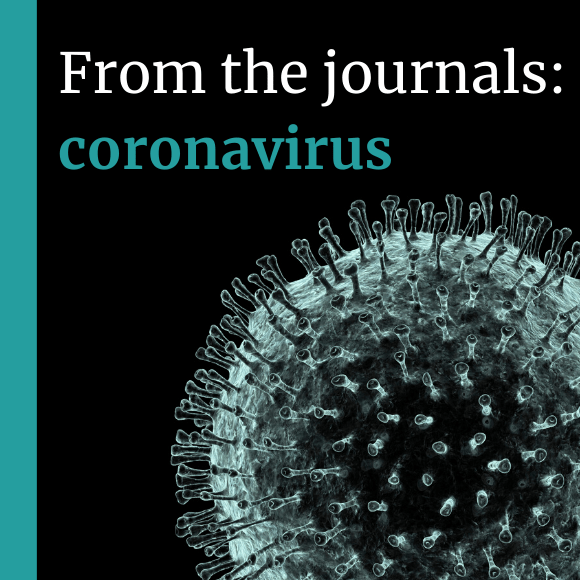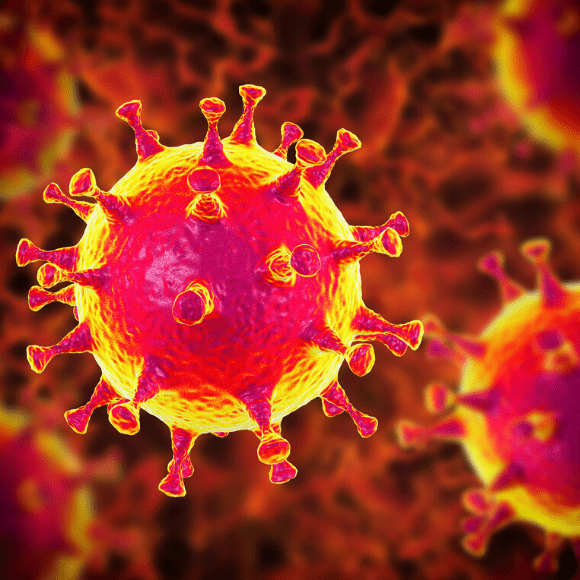Coronavirus: sorting the fact from the fiction

Myths about the novel coronavirus disease, COVID-19, are spreading through the population faster than the disease itself, so what do you really need to know about the ongoing pandemic?
On 11 March, 2020, the World Health Organization (WHO; Geneva, Switzerland) declared the ongoing outbreak of COVID-19 to be a pandemic. Today (02 April) over 955, 000 cases have been reported, from over 200 countries and territories. However, the WHO Director-General has issued a statement that the spread can be controlled, assuming countries and individuals follow the advised strategies.
But with the world’s media reporting every little thing, and misinformation spreading faster than the disease itself, what do you need to know about COVID-19?
If you would like to keep up to date with our content on coronavirus, you can sign up for our site here, where you can subscribe to our newsletters for free!
What do we know about the COVID-19-causing virus?
The virus that causes COVID-19, named SARS-CoV-2, belongs to the coronaviridae family of lipid-enveloped, single-stranded RNA viruses. The coronaviridae family is a large family of viruses that cause illnesses such as the common cold and the more serious SARS (Severe Acute Respiratory Syndrome) and MERS (Middle Eastern Respiratory Syndrome).
The first genetic sequence of the virus was completed in early January, and gave researchers an answer to the most basic questions about the disease; what pathogen is causing it? However, as the months go on, the diversity in the viral genome is increasing. At over 30,000 base pairs, SARS-CoV-2’s genome is thought to accumulate approximately one to two mutations a month. By following the mutation patterns of the virus as it spreads, researchers are attempting to track the mutation and determine how it is spreading. Though the virus is mutating, as yet this has not caused a significant change in its behavior, how it enters cells or how is transmitted.
A team lead by researchers at Sunnybrook Research Institute (ON, Canada) isolated the virus, having cultured it from clinical specimens taken from a containment facility. It is hoped that isolating the virus will speed up developments in testing, treatments and vaccine developments, as understanding of the biology of COVID-19 is better understood.
Artificial intelligence is now being utilized to find new solutions for the pandemic. Set up by software developers C3.ai (CA, USA) and involving contributors from major universities across the USA, the C3.ai Digital Transformation Institute aims to collate research being conducted across companies and universities and discover ways to slow the spread of COVID-19. Also utilizing the latest in such technology, researchers at the University of California, San Diego (CA, USA) are creating a computerized model of the virus which they hope may be used to develop new drugs and vaccines as well as give greater insight into how it infects the body.
Apps, such as the COVID Symptom Tracker app developed by researchers at King’s College London (KCL; UK), have been created that allow the public to self-report their symptoms, or lack of symptoms, as part of an attempt to better track the spread of the disease. It is now largely understood that the virus can spread undetected and it has been estimated that up to 25% of people with the virus are asymptomatic carriers. Therefore, the statistics being stated in the news are likely a large underestimation of the true extent of the spread. Symptom tracker apps should give researchers a better idea of the affect on the population without relying on data given by serious cases that have required hospitalization.
 From the journals: coronavirus
From the journals: coronavirus
Many publishers have made their coronavirus-related publications free to read online, including ours, Future Science Group. Here’s a brief overview of what’s available.
How can I stop the spread of COVID-19?
Standard protocol for avoiding the spread of infection applies to this outbreak. Regular hand washing with soap and water for at least 20 seconds and general avoidance of touching the face is suggested to curb the spread. Many songs have been highlighted as the right length for hand washing, with the main example recommended by WHO being ‘Happy Birthday’ sung twice. Alternatively, you can create your own graphic for hand washing based on the song of your choice using this generator.
In the absence of hand washing facilities, alcohol-based hand sanitizer gels can be used, though only in moderation. Overuse of the gels can lead to increased skin sensitivity and damaged skin, which results in an increased vulnerability to infection. In a 2019 study led by the American Society for Microbiology, soap and water was found to be more effective than a dab of gel at preventing the spread of seasonal influenza.
The virus has been found to survive between 3 and 72 hours, depending on the material. The study, published in the New England Journal of Medicine, found that the virus remained viable, and therefore infectious, for 3 hours in aerosols, up to 24 hours on cardboard and up to 72 hours on stainless steel or plastic surfaces. This study reinforces the WHO recommendation to regularly wipe down surfaces and workstations, as well as wash hands after touching anything out of the home.
Though face masks are not wholly ineffective, wearing one when in public spaces will likely do little to protect you from the virus. The masks are able to capture the droplets that are presumed to be the primary transmission route of the virus, so wearing one when you have the disease can protect others. However, it has been suggested that the virus can also transmit through the eyes, which remain unprotected by masks, and via viral particles not blocked by the mask. Healthy people should only wear masks when directly in contact with an infected individual, and they should know how to use and dispose of the mask properly – details on how to do so can be found on the WHO website.
A recent analysis into China’s response to the outbreak demonstrated that the severe isolation measures enacted likely prevented an additional 700,000 cases of COVID-19 in the country and delayed the spread from Wuhan province, giving time for other cities to prepare. This highlights the importance of social distancing and the isolation measures currently in place in other countries. Following governmental guidelines on self-isolation is currently the best way for any individual to slow the spread of the disease; however, with the threat of SARS-CoV-2 establishing endemic status, it is likely that pharmaceutical intervention will be required to fully stop the disease.
 Genome sequencing suggests undetected spread of coronavirus
Genome sequencing suggests undetected spread of coronavirus
Two genetically similar cases of coronavirus in Washington state suggest that the virus could be spreading undetected.
What is the difference between flu and COVID-19?
The overlap in symptoms between COVID-19 and seasonal flu is believed to have delayed the detection of community infections in some countries; both diseases can present with fatigue, muscle aches and a fever, making differentiating the two difficult. A key difference is the lack of runny nose seen in COVID-19 cases, with just 5% of patients reporting the symptom. Pneumonia is more common in COVID-19 patients and may lead to difficulties breathing and shortness of breath. However, many cases are mild and only 15% of reported cases are linked to the more severe symptoms.
Data from the aforementioned symptom tracker apps have alerted researchers to a wider range of clinical symptoms than previously known, particularly in milder cases. The KCL team behind the COVID Symptom Tracker app reported that loss of smell and taste may be a key symptom to look out for, with 59% of confirmed COVID-19 cases reporting both olfactory and taste sensory dysfunction.
Despite some differences, the only way to definitively differentiate the two is to be tested. If you show some symptoms or believe you have been exposed, do not visit the emergency department or primary care service – self-isolate and use an online service or phone your doctor.
Is there a cure?
At present there is no cure for COVID-19. Current recommendations are to treat the symptoms in a bid to relieve them, while the immune system fights the virus. This means that the hunt is on to find a vaccine for the disease.
Some hospitals have begun trialing a combination of lopinavir and ritonavir, which are two-anti HIV drugs; however, it is still too soon to tell whether the treatment is effective. It requires validation in a large number of patients to conclude whether it is suitable for the majority of individuals.
Japan’s National Institute of Infectious Diseases (Tokyo) has announced that it will begin testing the drug Ampligen, which is produced by AIM ImmunoTech (FL, USA). The RNA drug previously demonstrated effectiveness against the original SARS coronavirus, which has almost identical regulatory sequences to SARS-CoV-2.
Bio-tech company Moderna Inc. (MA, USA) has already created a mRNA-based vaccine that is already in Phase I of its clinical trial with the first patient given the vaccine on March 16. However, with an estimated completion date of June 2021, a publicly available COVID-19 vaccine is still a long way off.
The Bill & Melinda Gates Foundation (WA, USA), Wellcome (London, UK) and Mastercard (NY, USA) have announced the ‘COVID-19 Therapeutics Accelerator’ which will co-ordinate efforts to develop treatments for COVID-19. The initiative will utilize research relating to already approved compounds whilst simultaneously investigating new therapies and monoclonal antibodies in the hope of the rapid development of a therapeutic.
More and more trials are being registered. As of April 2 ClinicalTrials.gov had 282 listed studies for COVID, a number that is continually increasing. With trials for vaccines, new or repurposed drugs, the race to develop a cure for the disease is well and truly on. However, there is a long way to go before anything is clinically available.
For updates on the coronavirus outbreak, as well as the latest recommendations and tips for reducing the spread of the disease, check the WHO coronavirus page.
For healthcare information, visit your country’s disease control center; for example the Center for Disease Control (US), NHS (UK), European Centre for Disease Prevention and Control (EU)